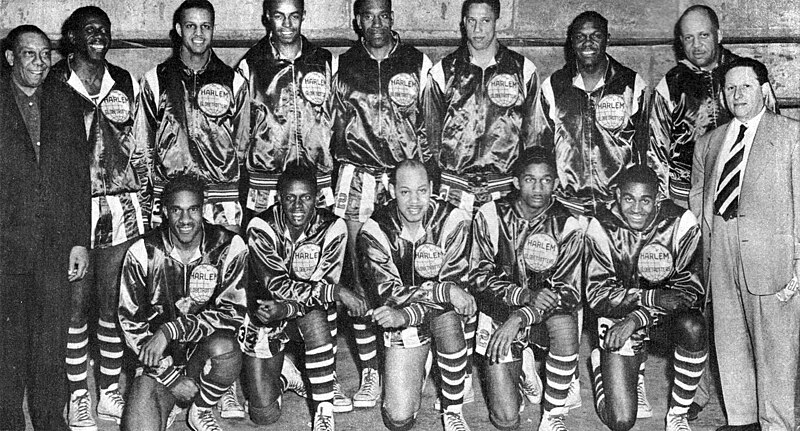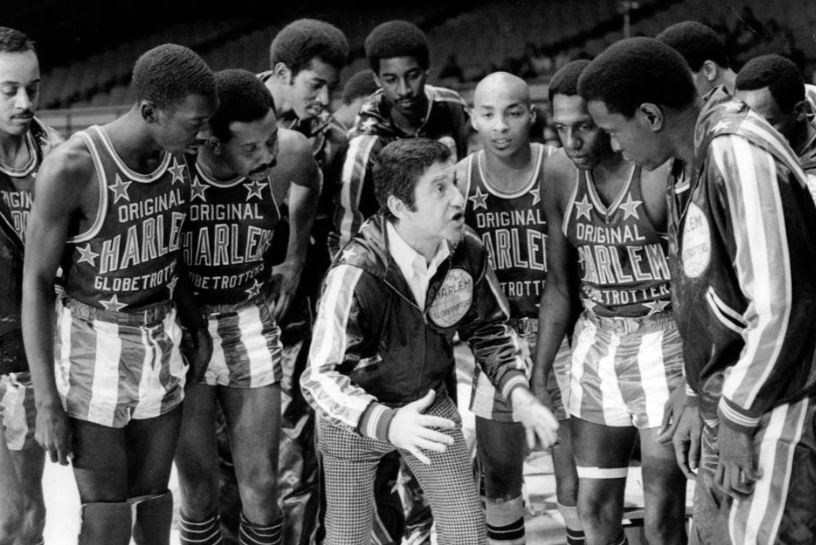This unique basketball exhibition team from the United States centers its brand of play by combining comedy, theater, and athleticism. The Harlem Globetrotters was founded by Tommy Brookins in Chicago, Illinois, in 1926. The team chose the name Harlem because it is associated with a significant African American neighborhood. They have played more than 26,000 exhibition games in 124 nations and territories over the years, mostly against intentionally weak opposition like the Washington Generals of 1953–1955, starting in 201) and the New York Nationals of 1995-2015. The team’s anthem is Brother Bones’ whistled rendition of “Sweet Georgia Brown,” and “Globie” is the name of their anthropomorphized globe mascot. Watching one of their exhibition games can be one of the many new experiences you can enjoy in NY. The Herschend Family Entertainment owns the squad.
The Team’s Brief History
All the original players of the Globetrotters were reared on Chicago’s South Side, which is where the team was founded in 1926. When the Savoy Ballroom first opened in January 1928, the Savoy Big Five, a basketball team made up of Black Americans, was one of the main draws. Due to dwindling dance attendance, the Savoy Big Five played exhibition games before dances. Several players left the team in 1928 after a disagreement. They organized a group dubbed the “Globe Trotters” that fall, and under Tommy Brookins’ direction, they went on a spring tour of southern Illinois. As the team’s manager and promoter, Abe Saperstein got involved. By 1929, Saperstein’s basketball team, the “New York Harlem Globe Trotters,” was touring Illinois and Iowa. To mythologize the team’s worldwide venues, Saperstein chose the names Globetrotter and Harlem, respectively. At the time, Harlem was regarded as the epicenter of Black American culture.
The Globetrotters won the World Professional Basketball Tournament in 1940 and were regular competitors. A few years later, in a game between the Globetrotters and the Minneapolis Lakers that drew large crowds, the Globetrotters made news by defeating one of the top white basketball teams in the nation, the Lakers. Due to Harlem controlling the entire talent pool of the greatest black basketball players in the nation, the Globetrotters were able to win games with ease. The National Basketball Association soon surpassed the Harlem Globetrotters as one of the most well-known teams in the nation, especially after NBA clubs started using black players in the 1950s. Nat “Sweetwater” Clifton of the Harlem Globetrotters became the first black player to sign an NBA contract when the New York Knicks bought his contract from the Globetrotters for $12,500 and roughly $141,000 in 2021, with Harlem receiving $10,000 and Clifton receiving $2,500. In 1950, Chuck Cooper of the Harlem Globetrotters became the first black player to be drafted into the NBA by Boston.
Lenin’s Athletic Order of Medal
The Globetrotters invited Louis “Red” Klotz to form a team in 1952 so they could tour together. The Washington Generals, who often competed under other identities, were the major rivals of the Globetrotters. Vasily Grigoryevich, the manager of Lenin Central Stadium, extended an invitation to Saperstein, and the Globetrotters played nine games there in 1959. The group, which featured Wilt Chamberlain, was greeted warmly by onlookers and officials. They also had a meeting with Premier Nikita Khrushchev and earned the Athletic Order of Lenin medal together.
The Globetrotters brought their own opposition to the Washington Generals, but according to one report, spectators were initially perplexed. A Soviet audience of 14,000 was in complete silence through the first half of the game. They were utterly awe-struck at how the game was unfolding. It warmed up slightly in the second half when it realized the Trotters are more show than the competition. “This is hardly basketball; it is too full of trickery, according to a Pravda assessment”, which nevertheless commended the Globetrotters’ talent and said that the team has some techniques to offer them. Interestingly, the team performs a lot of entertainment, just as sports betting continues to roar success in this sports hub teaming with tourists and spectators. Discover more of NCY’s sports scene. Visit How Has Madison Square Garden Shaped NYC’s Sports Legacy?
The Team’s Name
The North Side of Chicago’s Abe Saperstein was hired as the Globe Trotters’ new manager. Saperstein, a superb promoter, changed the team’s name to the New York Harlem Globe Trotters in the hope that by giving the idea that they had traveled a considerable distance to be there, the moniker would increase interest in the team in Illinois and Iowa. Saperstein, the shortest inductee into the Basketball Hall of Fame, also reasoned that adding the moniker “Harlem” to the group would help promote it as an all-Black basketball team during the height of the Harlem Renaissance. Despite its name, they didn’t actually play a game in Harlem until 1968.
Joined by Baseball Hall of Famers
Along with the basketball greats who played for the Harlem Globetrotters, three Cooperstown giants of the diamond also did. Pitcher Bob Gibson spent the last part of 1957 playing with the Globetrotters and sharing a room with Basketball Hall of Famer Meadowlark Lemon before the St. Louis Cardinals reportedly offered him more money to concentrate only on baseball. Ferguson Jenkins, a pitcher who had 20 victories for the Chicago Cubs, played for the Globetrotters from 1967 to 1969 while the seasons were off. Lou Brock, a speedster who had previously won a World Series with the Cardinals in 1967, also participated in a few games for the court jesters.
A Defeat to the Washington Generals
Red Klotz, the manager, and coach of the Philadelphia Sphas was requested to tour as the Globetrotters’ rivals in 1953 by Saperstein since it was getting harder for them to find opponents as they barnstormed the nation. The Sphas had previously defeated the Globetrotters on multiple occasions, but Klotz’s new team, which he renamed the Washington Generals, wouldn’t likely repeat that performance. The players and the losing remained the same even if the team adopted different names, including the Boston Shamrocks, New Jersey Reds, and Atlantic City Seagulls. The Generals are thought to have lost more than 16,000 games to the Globetrotters, but on January 5, 1971, 50-year-old player-coach Klotz defeated the Globetrotters in Martin, Tennessee, with a last-second basket. The Generals’ coach was doused with orange soda in the locker room because they were short on champagne. Klotz was cited as comparing the historic triumph to shooting Santa Claus: “Beating the Globetrotters is like doing that.”
The Team’s One-Armed Star
Boid Buie joined the Harlem Globetrotters in 1946 as one of the fresh newcomers. Given that he had lost his left arm in a car accident as a youth, Buie possessed an incredible talent. He overcame his disability to excel at Tennessee State and lead the team as a senior. Buie averaged double-digit points per game throughout his nine years as a Globetrotters player.
The Team’s Star in the Hollywood Walk of Fame
The Harlem Globetrotters demonstrated their ability to entertain audiences off the court by appearing in two Hollywood films from the 1950s, including “Go Man Go” with Sidney Poitier. They started appearing regularly on Saturday morning television in the 1970s, appearing in two distinct Hanna-Barbera animated shows and the live-action variety show “Harlem Globetrotters Popcorn Machine” from 1974. After crash-landing on Gilligan’s Island, the group played a team of robots and worked with Scooby-Doo to solve mysteries. The Harlem Globetrotters were awarded a star on the Hollywood Walk of Fame in 1982 in honor of their work as performers.


